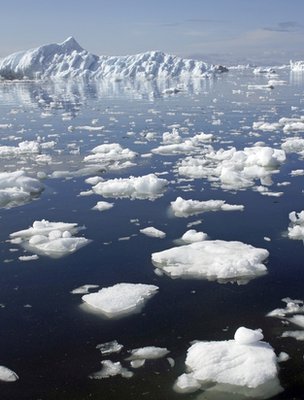
As news breaks that the arctic will melt to new record levels this summer, we wait to see what we will discover hidden under the ice. Parts of the arctic that will melt this year have been frozen over for thousands of years. Scientists await!.
Latest figures show that on 13 August ice extent was 483,000 sq km (186,000 sq miles) below the previous record low for the same date five years ago.
The ice is expected to continue melting until mid- to late September by which time it will reach all time record.
‘Rapid melt’
Sea ice extent refers to a measurement of the area of Arctic Ocean that contains at least some sea ice. Areas with less than 15% are considered by scientists to mark the ice edge.
The the average rate of ice loss since late June had been “rapid”, with just over 100,000 sq km melting each day.
Originally posted 2016-03-25 08:27:56. Republished by Blog Post Promoter













